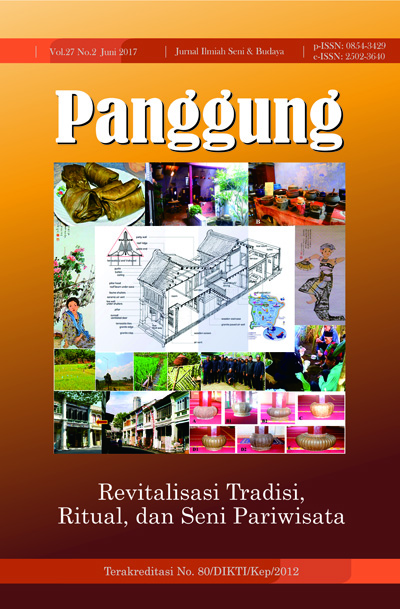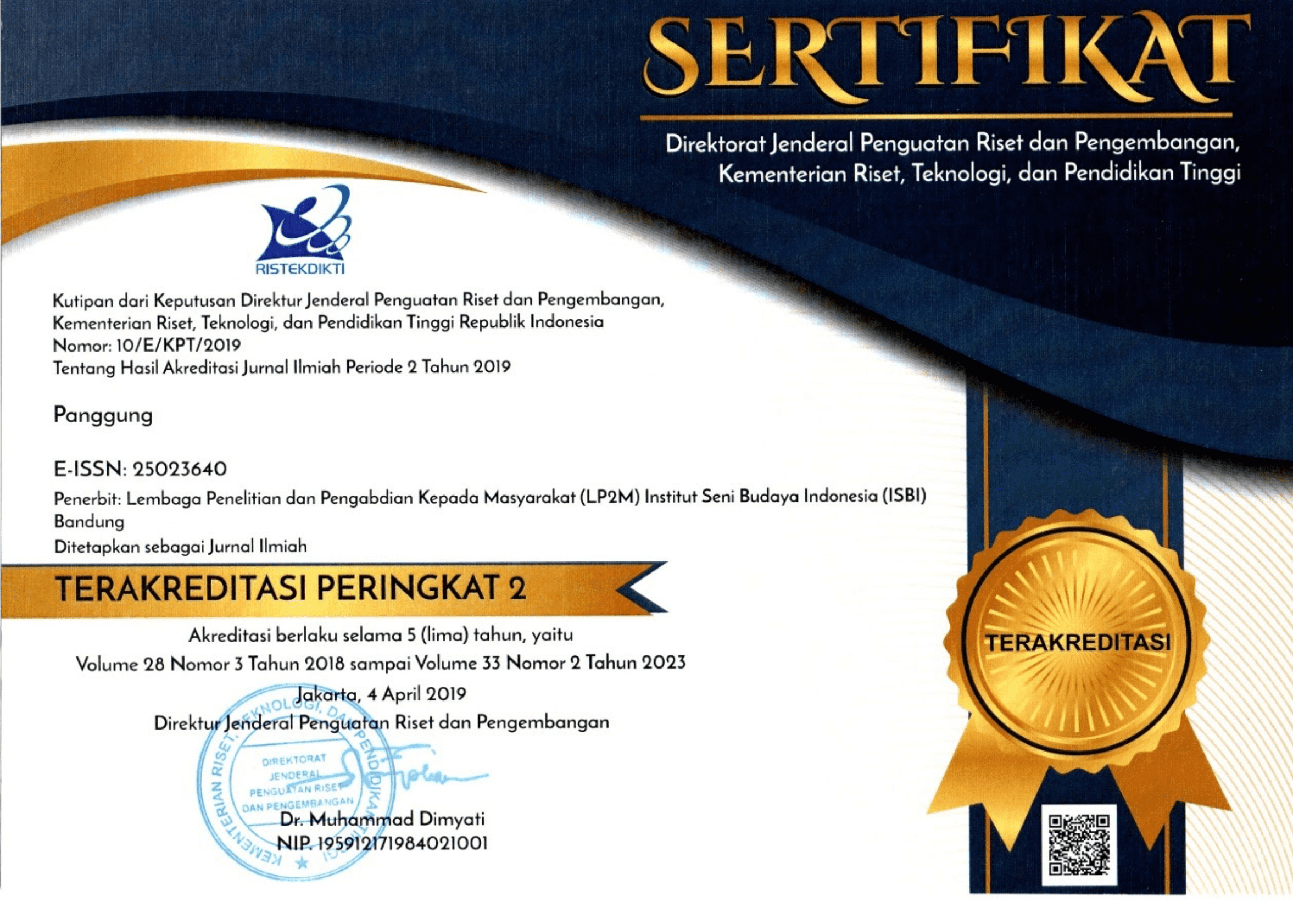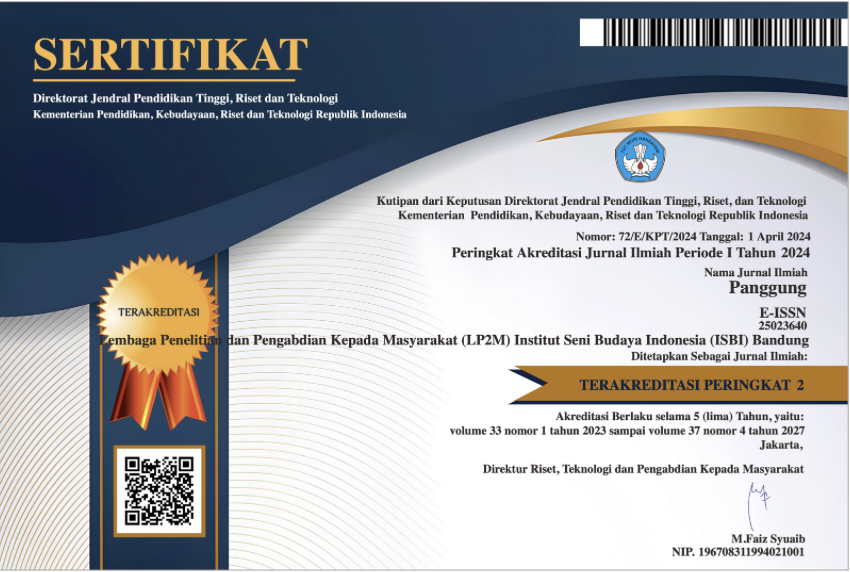THE SUSTAINABLE ARCHITECTURAL VALUES OF ECLECTIC STYLE SHOPHOUSES CASE STUDY: SUN YAT SEN MUSEUM PENANG, MALAYSIA
DOI:
https://doi.org/10.26742/panggung.v27i2.253Abstract
Abstract
The Sun Yat Sen shophouse in Penang is a small private Museum, which was converted from a shophouse or townhouse situated in theArmenian Street heritage area of George Town. The building is an example of embraces of the architectural heritage of George Town which is an extraordinarily beautiful example of Straits Settlements merchant's shophouse.Historically, it is associated with the global historical personality of Dr. Sun Yat Sen and hisrevolutionary. This city was added to the UNESCO's world heritage list in 2008 to acknowledge its rich cultural heritage that constitutes of unique architectural and cultural townscape along the Straits of Melaka. This paper investigates the architectural plan of a shophouse and the valuesof cultural heritage buildingswhich eventually was converted into a Museum in George Town, Penang. Classified as an eclectic style shophouse, it is rich in design and art components featured in its architecture that are still sustaining until today. This building has an interesting mixture of architectural and cultural inspirations adapted from the Chinese origin, with the local Malay ethnicity and the European influencesthat colonised the region. The introduction of new non related architectural components into the southern Chinese (eclectic style) style in shophouses in George Town has resulted in the disappearance of this unique style of architecture. This investigation employs a qualitative research approach by documenting evidence and understanding the architectural as well as cultural influences of the southern Chineseeclectic style by studying the Sun Yat Sen Museum as a case study. The findings of the research point towards an understanding of the architectural and cultural influences that govern the design of the shophouse and its architectural character.
Key words: sustainable architectural values, George Town, eclectic style, shophouses
References
Bahauddin, A., & Abdullah, A.
The Baba-Nyonya Architecture Of Malacca-Exploration Of Interior Space Planning
And Embellishments.
Chansen, N.
“Sino-Portuguese”: The significance of the Shophouse definition in Southern
peninsula, Thailand. In Vernacular heritage and earthen architecture: Contributions for
sustainabledevelopment (pp. 93-98).
Fatland, F.
The Influence of a Multicultural Society on Penang's Architecture. Retrieved August
, 2014, from
http://www.expatgo.com/my/2013/06/25/the-influence-of-a-multicultural-society-on- penangs-architecture/
Fels, P.T.
Penang, Palaysia--Penang's Shophouse Culture. Places,9 (1).
Ghafar Ahmad.
THE ARCHITECTURAL STYLE OF THE PERANAKAN CINA. Paper presented at
the Minggu Warisan Baba dan Nyonya, Universiti Sains Malaysia, Penang.
Book, Khoo Salma Nasution.
'Curating the Sun Yat Sen Penang Base', in Leo Suryadinata (editor), Peranakan
Chinese in a Globalizing Southeast Asia, Singapore: Chinese Heritage Centre, pp.
-184.
Knapp, R. G.
Chinese Houses of Southeast Asia: The Eclectic Architecture of Sojourners and Settlers:
Tuttle Publishing.
West, Barbara. A.
Encyclopedia Of The Peoples Of Asia And Oceania. Facts On File (pp. 657).
Yvonner,L. Alvin,W.
Architecture Restoration Sun Yat Sen Museum. Retrieved August 13, 2015
Downloads
Published
How to Cite
Issue
Section
Citation Check
License
Penulis yang menerbitkan jurnal ini menyetujui persyaratan berikut:
Penulis memiliki hak cipta dan memberikan jurnal hak publikasi pertama dengan karya yang secara simultan dilisensikan di bawah Creative Commons Attribution License yang memungkinkan orang lain untuk berbagi karya dengan pengakuan kepengarangan karya dan publikasi awal dalam jurnal ini.
Penulis dapat mengadakan perjanjian kontrak tambahan yang terpisah untuk distribusi non-eksklusif versi jurnal yang diterbitkan dari karya tersebut (misalnya, mempostingnya ke repositori institusional atau menerbitkannya dalam sebuah buku), dengan pengakuan atas publikasi awalnya dalam jurnal ini.
Penulis diizinkan dan didorong untuk memposting pekerjaan mereka secara online (mis., Dalam repositori institusional atau di situs web mereka) sebelum dan selama proses pengiriman, karena dapat menyebabkan pertukaran yang produktif, serta kutipan yang lebih awal dan lebih besar dari karya yang diterbitkan.
Authors who publish with this journal agree to the following terms:
Authors retain copyright and grant the journal right of first publication with the work simultaneously licensed under a Creative Commons Attribution License that allows others to share the work with an acknowledgement of the work's authorship and initial publication in this journal.
Authors are able to enter into separate, additional contractual arrangements for the non-exclusive distribution of the journal's published version of the work (e.g., post it to an institutional repository or publish it in a book), with an acknowledgement of its initial publication in this journal.
Authors are permitted and encouraged to post their work online (e.g., in institutional repositories or on their website) prior to and during the submission process, as it can lead to productive exchanges, as well as earlier and greater citation of published work.






